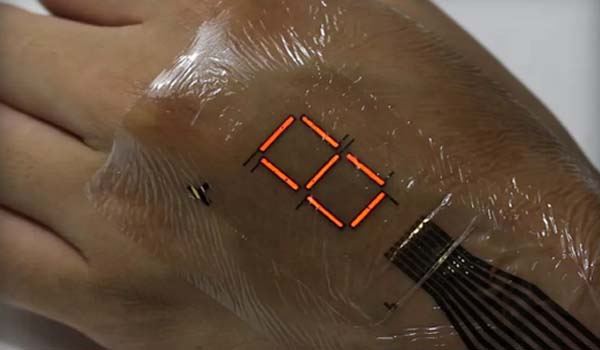Researchers have successfully created a new organic polymer diodes that can emit light in red, green and blue color. Abbreviated as PLEDs, Polymer Light-Emitting Diodes could serve as a digital display on human skin.
PLEDs or Polymer Light-Emitting Diodes are actually super-thin sheets of efficient light sources that can light up the pixels on human skin, serving as a digital display, The Verge reported. The magazine extrapolates future possibilities of the technology to temporary tattoos, pastable disease detection device, wearable skin watch and even electronic skin.
The e-skin has been under the extensive focus of researchers, but a team from the University of Tokyo has further expanded the possible implications of PLEDs to grafting thin sheets of digital displays right on the human skin. By the virtual of this new technology, people will be able to read complex digital information from their PLED-embedding hands.
The journey of creating flexible display screens and e-skin has led to technologies like pressure detect, camouflage and body temperature reading. The feat was accomplished by adding a protective coating to typical PLEDs which is known as a passivation layer.
The passivation layer was successfully able to keep oxygen and moisture away from the complex device so the light can work for several days. The study published in Science Advances also highlighted more benefits of PLED technology lesser electricity consumption and lesser heat production
The experiment was carried out on an e-skin that joined red and green PLEDs with a flexible sensor which in turned that measured amount of oxygen in human skin. The experiment also showed that after coating of passivation layer n e-skin, the sensor continued to send measurements for four days in the ordinary air when laminated to a finger.
The researchers created the protective film by alternating layers of inorganic silicon oxynitrite with organic parylene material, Sci-News reported. The team was also able to make an e-skin display by embedding transparent indium tin oxide electrodes to a super-thing substrate without destroying it.
So PLED can reportedly respond to body movements and are flexible enough stretch with the human body. The following YouTube video tells more on the story.



